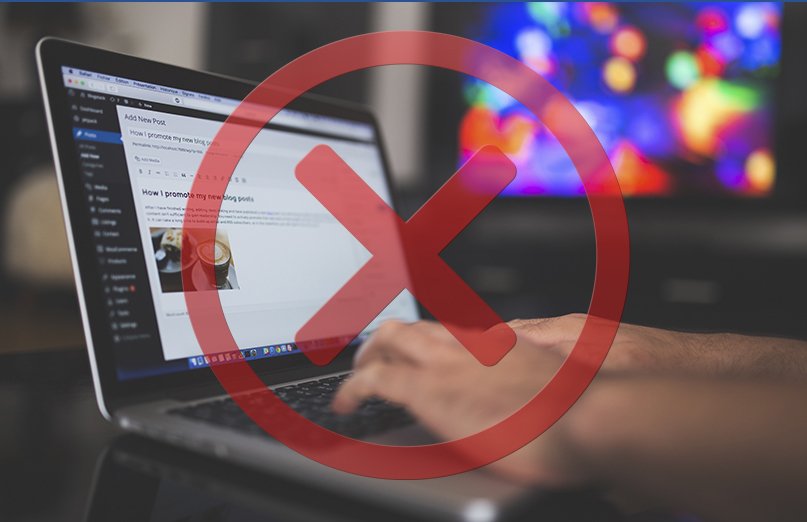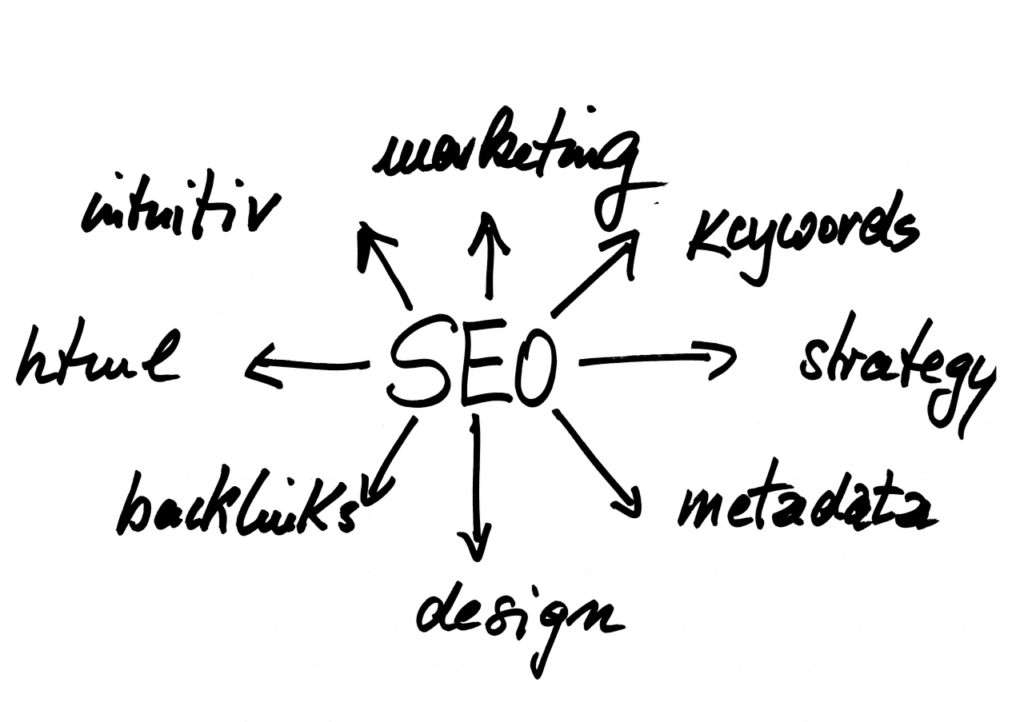
10 Blogging Mistakes You Need To Avoid
There are common blogging mistakes that new and seasoned bloggers make. These mistakes can easily be avoided, if you know about them. This top-10 list of blogging mistakes will help you improve your blogging skills exponentially.
Mistake # 1: Choosing a Broad Niche

Choosing a broad niche is a mistake that many new bloggers make. But even seasoned bloggers can find themselves in a similar predicament, if they extend their topics to meet their audience’s needs. You can’t be everything to everyone.
If you want to be a successful blogger, specialize. Having a specialized niche means your blog posts can be much more focused and reach a more dedicated audience. When you choose a sub-niche, it’s much easier to provide the information/solutions they want and need.
Covering a broad niche can be overwhelming for the blogger and the readers. Consider the differences between talking about the broad niche, “Movies” and focusing on the market niche, “Vintage Movies.” Narrowing down the “Movies” niche to “vintage movies,” helps to cut down on the amount of content needed. It also makes it easier for vintage movie buffs to find the info and products they want. Specializing is a win-win situation for everyone, as long as you do your research first.
Mistake # 2: Losing Focus

Losing the blog’s niche focus can happen to the best bloggers, especially if they’ve been covering the same topics and problems for years. When they feel they’ve covered everything a million times, they often write about marginal topics, such as politics. This is a big mistake if it goes beyond a post or two.
If you start running out of content ideas, reconnect with your audience. Do more research. Read industry news. Survey your audience to get ideas. Start a focus group to discuss niche related issues and problems.
Use the information you discover to bring your blog back into focus and create a content plan to help you stay on topic. Schedule time to do research and plan each week.
Mistake # 3: Skipping Audience Research

In trying to get your site up and running, you may have skipped some of the research. Audience research is one of the areas business owners tend to skip altogether or do minimal research. Don’t assume you know your niche audience. That is a huge mistake, which can be detrimental to your business and profits.
In order to promote solutions effectively, you need to know the cold, hard facts about your audience. The only way to learn is to do the research and get proof of what you suspect to be true. If you did skip over this research step, go do it now. Get the demographics on them. Use the info to create an ideal customer profile and look at the profile before you create content or send out a promotion. Make sure your content addresses problems and solutions that are relative to your readers.
Mistake # 4: Creating Bland Impersonal Content

Publishing bland, impersonal content is one of the worst mistakes you can make. Not only is it boring to readers, it doesn’t help to set you apart from the competition. Incorporate your personality into the content. If you crack jokes, use puns, have a sassy attitude, etc., include those writing styles (or voice) in your content. While you want to be yourself and give your readers a sense of what you’re like in person, you still need to be seen as a professional.
Some people mistakenly believe that you to write like you talk. That is not what is meant by finding your “voice” and it can cause problems, especially if you use slang, have an “accent,” or tend to use non-standard phrasing. For example, if “I ain’t got no idea,” is a typical sentence you use at home, that’s fine. However, it will not help you achieve authority status or appear knowledgeable online, if you write it in your content. Maintain a semblance of professionalism to preserve your credibility and reputation.
Convey your personality in your content to add character and make it more interesting. That’s what finding your voice (style) means.
Mistake # 5: Focusing On Yourself

Your blog is not really about you, even if you are writing about your travels, cooking, decorating, or other experiences in a particular area of life. It’s about what your audience wants and needs to know regarding the niche.
Sharing your experience is a good lead-in when introducing a niche related concept. However, it’s easy to forget that your audience is more interested in what you can teach them rather than what you had for breakfast. This holds true for even the most renowned experts in a field.
Don’t let your ego grow with your number of followers. When you lose your perspective about what is important and why people read your blog, you will also lose followers and buyers.
It’s important to keep yourself grounded, especially if your website/blog is popular or you have a large number of followers. Remind yourself in multiple ways that you didn’t achieve success by yourself. Other people have inspired, boosted, and supported your efforts throughout your journey. Practice gratitude more often to regain your perspective. In fact, give your blog a gratitude infusion by including it in your writing and encouraging readers to do the same.
Mistake # 6: Using Out of Date SEO Best Practices

If you are still trying to use a keyword as many times as possible throughout your content, you are using out of date SEO best practices. Implementing current SEO strategies will ensure that your blog is easily discovered and read by your target audience, while it also receives frequent search engine visits.
Use on-page and off-page SEO for best results. On-page SEO is done on your blog. Examples include keyword rich titles and ensuring your page loads quickly. Off-page SEO involves what is said and done on other websites and platforms. Examples include links to your pages and visitor/customer ratings. SEO is important to your readers and search engines. Stay up to date on the latest strategies.
Mistake # 7: Failing To Edit Thoroughly

While you want to be yourself and give readers a good idea of your personality, you also want to avoid making errors that undermine your credibility and authority. Double and triple check your content using multiple editing programs.
A few things to address before publishing include misspelled and misused words, poor sentence structure, run-on sentences, unclear phrasing, and anything else that makes it difficult for visitors to read and understand your content, such as big words. This factor may be found in the “readability” level.
After editing, read the content aloud. If you stumble or have to stop mid-sentence to re-read it, re-write the sentence or passage.
Your credibility and reputation depend on how you are perceived by your readers. Failing to edit and read your content can leave you with what appears to be inaccurate and unprofessional information. If editing doesn’t come naturally to you or you don’t have time to do it, hire an experienced content editor to help you guard your reputation.
Mistake # 8: Inconsistent Posting

While you want to be yourself and give readers a good idea of your personality, you also want to avoid making errors that undermine your credibility and authority. Double and triple check your content using multiple editing programs.
A few things to address before publishing include misspelled and misused words, poor sentence structure, run-on sentences, unclear phrasing, and anything else that makes it difficult for visitors to read and understand your content, such as big words. This factor may be found in the “readability” level.
After editing, read the content aloud. If you stumble or have to stop mid-sentence to re-read it, re-write the sentence or passage.
Your credibility and reputation depend on how you are perceived by your readers. Failing to edit and read your content can leave you with what appears to be inaccurate and unprofessional information. If editing doesn’t come naturally to you or you don’t have time to do it, hire an experienced content editor to help you guard your reputation.
Mistake # 8: Inconsistent Posting

Every piece of content should have a purpose/goal, such as driving traffic to the blog or promoting a specific product. When it comes to creating effective, content, you need to have a content plan in place. Planning content 2-months before it’s to be published gives you time to identify a need/problem, choose the topics/issues you want to cover, set a goal for the content, and get it written.
Having a plan and a clear goal for your content keeps you accountable and on track with your marketing strategy. If you can’t identify the purpose that an article serves or the goal it should achieve, don’t post it. Save it until later, when you can identify and define these details.
Mistake # 10: Limited Site/Blog Promotion

Just as your living room is the center of your home and where you invite guests, your blog is the hub of your business and serves the same purpose. Most of the important activities and content are found on your blog.
If you aren’t actively “inviting” your target market to your blog or website, you’re making a terrible blunder. Sending your “invitation” is easy. Notify your email subscribers with a weekly update email to point out the new posts they may have missed. But more importantly, share the newly published post, on your social media networks to reach a broader audience.
This is particularly important if you have a related business page or group. It’s the equivalent of inviting the world to a party (or just the neighborhood kids, depending on your settings.) Add this “sharing” activity to your to-do list or automate the process via software or plugin. Encourage others to share the post as well.
Everyone makes mistakes but you don’t have to learn your lessons the hard way. Discover how these top-10 blogging mistakes can be avoided or fixed, if you did happen to make one of them.